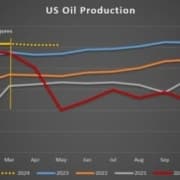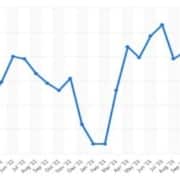The United States will continue to buy crude when prices are in the $70s a barrel or lower and plans to add several million barrels of crude to the Strategic Petroleum Reserve (SPR) early next year.
The U.S. Department of Energy (DOE) is continuing its efforts to bolster the depleted SPR with new oil purchases. DOE’s Office of Petroleum Reserves has recently announced a call for bids to supply up to 1.5 million barrels of oil to the Bayou Choctaw site in January 2025. An additional solicitation will follow on August 12, 2024, for another 2 million barrels destined for the Bryan Mound site, also for delivery in January 2025.
This move is part of a strategic plan to replenish the SPR while taking advantage of favorable oil prices.
The DOE’s stated goal is to buy crude oil at or below $79 per barrel.
The replenishment strategy comes in the wake of the SPR’s critical role in stabilizing the market during global supply disruptions, notably the release of more than 180 million barrels of oil from the SPR starting in 2021, as gasoline prices remained high. The Department of Treasury claims that these releases, along with coordinated international efforts, helped reduce gasoline prices by up to 40 cents per gallon in 2022.
The SPR currently houses 375 million barrels of crude—a figure that is 263 million barrels less than oil in the SPR at the beginning of President Joe Biden’s term in office. The SPR, capable of storing as many as 714 million barrels of crude oil, is kept in underground salt caverns at four sites in Texas and Louisiana and was designed to protect the economy and American livelihoods during oil shortages.
In June, U.S. Secretary of Energy Jennifer Granholm told Reuters in an interview that the Administration could accelerate the pace of buying crude to refill the SPR, as all four sites would be available by the end of the year after a maintenance period.
“All four sites will be back up by the end of the year, so one could imagine that pace would pick up, depending on the market,” Secretary Granholm said, commenting on the current pace of buying about 3 million barrels of crude for the reserve per month this year.
Click here to read the full article
Source: Oil Price
—
If you have any questions or thoughts about the topic, feel free to contact us here or leave a comment below.




